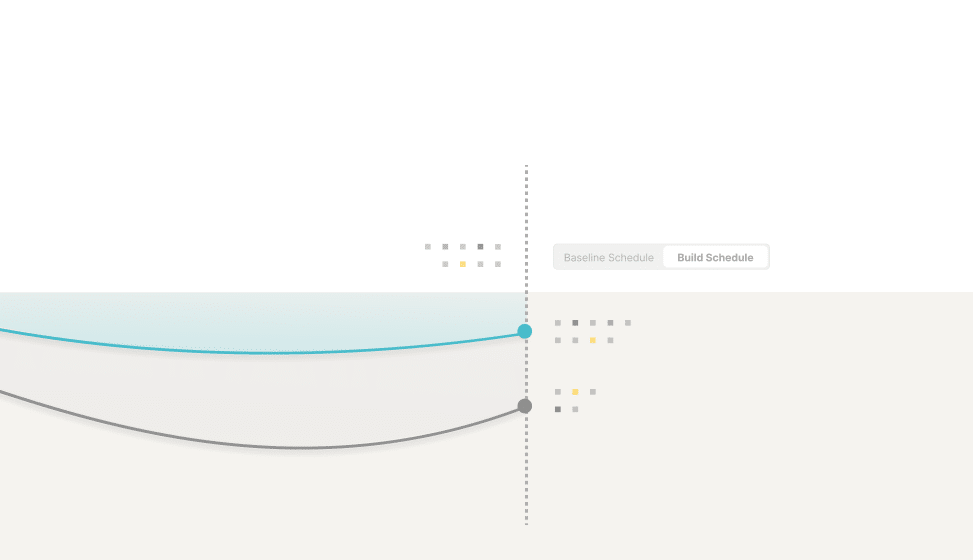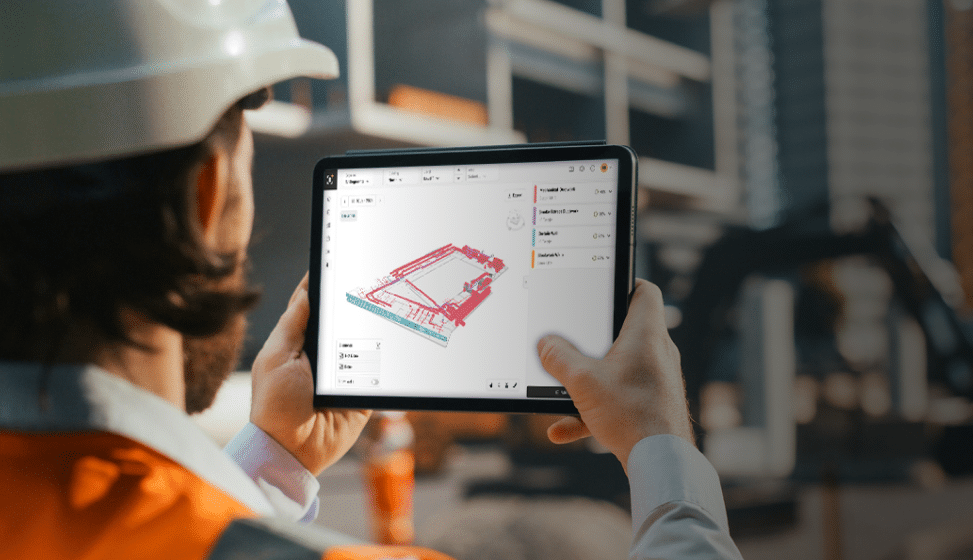Lean Construction Lean Construction: Principles, Benefits, and Implementation

Delivering a quality construction project on time and under budget is increasingly unheard of. While limited resources and funding certainly play a role in unfavorable outcomes, waste and inefficiencies compound the problem. As a result, many construction companies have embraced lean construction principles to reduce waste and increase value throughout the project lifecycle.
A Dodge Construction Network SmartMarket report found that among contractors using lean methodology, 84% reported higher quality construction, 80% reported greater customer satisfaction, 77% reported greater construction productivity, and 77% reported improved safety.
Lean construction is certainly an industry buzzword, and many companies see the value in its implementation; however, it is not universally used, likely due to a lack of knowledge on the topic or proper tools for implementation. This “Lean Construction 101” guide explains the principles, benefits, and lean methodologies immediately available for use.
What is Lean Construction?
Lean construction is a project management method that focuses on minimizing waste and increasing the value stream to achieve more successful outcomes. Lean methodology puts customer demands first and sets expectations based on stakeholder values. In addition, the lean construction process is repeatable, making success a predictable result.
Unfortunately, construction projects often have limited resources, quick timelines, and tight budgets. Lean construction provides a framework to maximize productivity and eliminate waste to overcome these constraints.
Evolution of Lean Construction
Lean methodology originates in manufacturing. After World War II, Toyota automobile manufacturers created a production system focused on reducing waste, improving employee camaraderie, and enhancing customer satisfaction. Other companies quickly caught on to these advanced production strategies and began incorporating them within their industries.
As lean methods worked their way into the construction industry, the Lean Construction Institute was established in 1997. The group aims to develop and share information on improving construction project management through lean construction practices.
Main Principles of Lean Construction
Lean construction focuses on two primary principles: eliminating waste and increasing value. These principles are applied at every stage of the construction lifecycle, from design to turnover, and by every stakeholder, whether the owner, architect, engineer, general contractor, subcontractor, or supplier.
Eliminating Waste
Lean philosophy aims to eliminate not only physical waste but also wasted time and resources. Therefore, each construction activity is analyzed to remove any unnecessary steps. If we cannot eliminate waste entirely, it should be minimized as much as possible.
Construction activities that should be reviewed to eliminate waste include:
- Transportation: Streamlining the transportation of materials and products to, from, and around the site.
- Surplus Inventory: Only store raw materials on-site that are needed in the near future to limit double handling. Practice just-in-time inventory management—work with suppliers and subcontractors so materials arrive when needed for installation and no sooner.
- Movement: Streamline process movements to complete tasks more efficiently.
- Waiting: Limit situations where a resource must wait on another before proceeding.
- Talent: Match worker talent and skillset with the most appropriate activities to maximize productivity.
- Overprocessing: Eliminate unnecessary steps in workflows that do not add value.
- Overproduction: Do not produce more than is needed or finish a task before the next one can begin.
- Rework: Avoid errors and quality defects in tasks that would require rework.
Increasing Value for your Construction Project
Every activity in lean construction is scrutinized under the lens of its value, specifically from the customers' standpoint. In the initial planning phase, understanding why a project is important or what the overarching benefits will be, are discussed as a group. The values established shape expectations throughout every phase of the project.
Each activity must bring value – a task is eliminated from the workflow if it does not offer value considering the required labor, equipment, and materials. The ideal lean construction scenario is the creation of a “value stream” where all activities contribute to value for the customer.
In addition to eliminating waste and increasing value, lean construction also emphasizes continuous improvement, employee ownership, and stakeholder satisfaction as core principles.
Benefits of Lean Construction in the Construction Industry
When implemented with the proper tools and across the entire organization, lean construction is an effective management system that leads to improved project outcomes. Common benefits of lean construction include:
- On-Time Project Delivery: Scrutinizing each step of the project plan enables teams to cut out any and all inefficiencies. Progress is closely tracked, and delays are communicated and mitigated. With lean thinking in place, projects are more likely to finish on time.
- Improved Quality: Value-added activities focus on communication and collaboration. With every stakeholder, including contractors and subcontractors, effectively working together toward the same goal, conflict and rework are reduced. The quality of installation is significantly improved, enabling a more streamlined turnover and punchlist process.
- Better Cost Control: Lean construction enables better cost control as inefficiencies are removed from all project activities. Additionally, the effort to reduce waste often translates to a reduction in cost.
- Safer Site Conditions: Every task is scrutinized in a lean construction model for value—safety being a leading value. Any potential risks are identified and mitigated to ensure work remains safe and productive. A safe job site is a prerequisite for achieving lean construction.
- Greater Stakeholder Satisfaction: The successful project outcomes from lean construction methods boost stakeholder morale. Customers feel more confident in the longevity of their projects, value the transparent processes, and look forward to future lean construction projects. Likewise, employees feel more accomplished in their work and look forward to continuous improvement and success.
- Increased Profitability: All previously mentioned benefits contribute to an improved bottom line. Construction companies who get projects done quickly and efficiently reap the benefits in the form of higher profits.
Methods to Achieve Lean Construction
While lean construction is considered more of a philosophy than anything else, certain established methods can build the framework for a lean project. The following processes can help contribute to a successful lean construction project.
Line of Balance
Line of balance (LOB) is a way to measure project progress compared to the initial plan. Most often, the comparison is graphical and shown with a LOB diagram. Project metrics, such as cost or percentage of completed work, are placed on the y-axis and compared to the project timeline on the x-axis. LOB can be used to visualize current progress versus expected progress, so resource modifications can be made to stay on track. Additionally, LOB diagrams display a production rate that can be used to forecast future performance.
Pull Planning and Scheduling
Traditional construction project scheduling is linear, with each activity placed in sequential order. Unfortunately, it often lacks detail and ignores critical tasks that are far in the future. Pull planning is the type of project scheduling used in lean construction. With this scheduling method, planning starts at the end of the project and works backward to ensure every detail is rightfully considered.
Pull planning is highly collaborative—an experienced construction leader will gather representatives from each subcontracting company to set their progress expectations and discuss activities that depend on other trades. Sessions often use color-coded sticky notes placed on a wall in a common area, with each note representing an activity. It puts all requirements and constraints out in the open, so the team can work together to optimize resources and achieve desired outcomes.
The Last Planner System
The success of pull planning depends on implementing the Last Planner System (LPS) workflow method. Developed by the Lean Construction Institute, LPS emphasizes group planning to hold each contractor and subcontractor accountable for their promised output. During a collaborative exercise, trade representatives set their production expectations and work through any roadblocks that could impede progress. The individual or trade who must complete their work before the next phase of work can begin is referred to as the Last Planner. The title holds this individual, as well as every party involved in the planning session, accountable for their progress.
Project Completion On-Time, Every Time
With the right tools and techniques, implementing lean construction methodology enables successful project outcomes and satisfied customers and staff.



